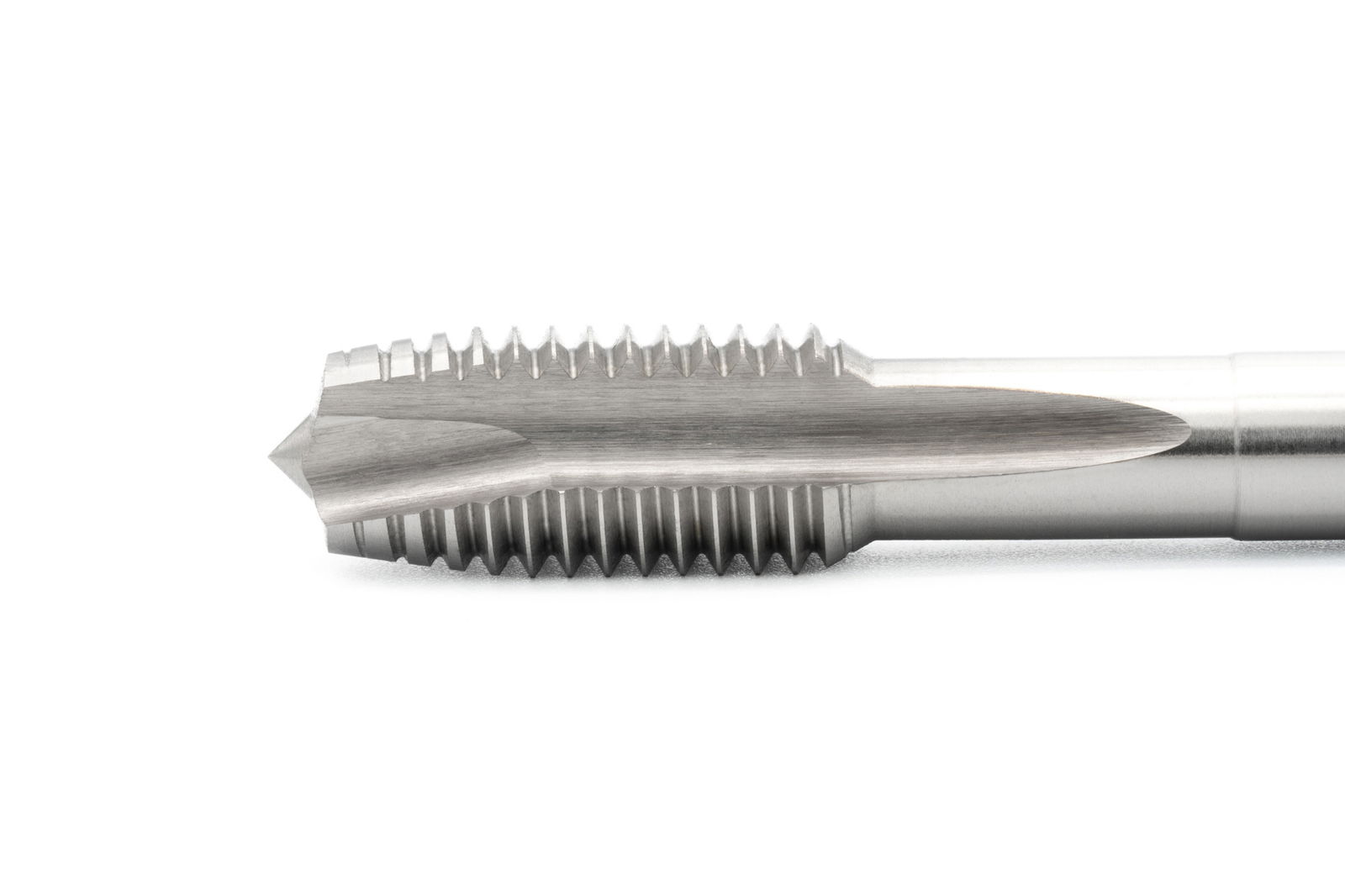
Spiral point taps: What is that?
Always trouble with the chips – does that sound familiar? You're not alone. Chips are so central to the process of thread cutting, that they've given their name to the whole group of machining processes. However, they are just waste material! Yet waste material that can quickly become a problem.
Chips can be long or short, appear in spiral form or in small curls. One thing they always are, namely in the way. That's why when designing taps, emphasis is placed on geometries that transport the removed material as quickly and predictably as possible. Especially in industrial thread production, reliability is required because you can't constantly keep an eye on chip formation.
Today we want to take a closer look at one of these measures for successful chip management. This refers to spiral point taps. What a tap with spiral point is, where it's used, and the benefits it brings are covered in this blog post.
What is a spiral point tap?
The main feature of the spiral point tap is that it cleanly transports the resulting chips forward. This is due to its special lead form. To understand this, let's first look at why the lead form in thread cutting plays such a major role. This way, you can more easily understand the special geometry of the spiral point tap, its applications, and the benefits of the spiral point chamfer.
Chamfer forms in taps
The chamfer is the area at the tip of the tap where the threads are not yet fully formed. Depending on the application and material , the length of this chamfer varies, from very short to long. It is specified as the number of threads over which the chamfer extends. In this way, six different chamfer forms can be differentiated, marked with capital letters: Form A to Form F. There's a certain relationship between lead form and the flutes of the tap , as not every combination is possible. Never leave the correct chamfer form to chance! Always use the right tool; otherwise, significant problems may arise in your work.
This is what the spiral point tap looks like
Now that we know what the chamfer forms are, we can classify our spiral point tap. Taps with spiral point always have the chamfer form B. This is a medium-length chamfer spanning 3.5 to 5.5 threads. Spiral point taps are also straight fluted. The spiral point is easily identified by a slight bend towards the tip of the drill. The flutes on the spiral point tap are relatively shallow as they don't need to accommodate chips. The spiral point chamfer usually extends slightly beyond the chamfer, usually about 1 to 2 threads.
Applications for the spiral point tap
Spiral point taps are suitable for through-holes in medium and long-chipping materials. A through-hole is a hole that completely penetrates the workpiece. The drill exits the material on the other side. The counterpart to a through-hole is a blind hole, which ends inside the material. Since a spiral point tap transports chips in the direction of cutting, it cannot be used for blind holes. Otherwise, the chips would fall into the bore, causing problems and being difficult to remove. A spiral point tap is always a tap for a through-holes.
The benefits of a spiral point
The main advantage of the spiral point tap is the unique way chips are removed. The chips are tightly rolled and transported in the cutting direction. Chip formation already starts at the tip of the drill. This not only makes your work cleaner but also keeps the flutes free of removed material. This property allows the coolant to flow smoothly, ensuring sufficient wetting of the cutting edges. The flutes can also be shallower compared to other taps, giving the spiral point tap more stability. The spiral point also positively affects the torque. If chips jam or clog, this can negatively affect the torque. Such situations are avoided with the spiral point tap. Instead, you can enjoy a high surface quality of the cut threads and long tool life. Moreover, the thread cutting tools with a spiral point facilitates the lead in thread manufacturing.
Thread cutting dies with spiral entry
By the way, not only taps can have a spiral point. Indeed, there are also thread cutting dies with a spiral entry. They essentially offer the same benefits as spiral point taps. The chips are transported in the cutting direction, preventing clogging of the chip holes. Furthermore, starting the cut with a round die with a spiral entry is particularly easy, and the cutting moment is reduced, resulting in pleasingly long tool life. For machine use, always use thread cutting dies with a spiral entry.
Many thread cutting dies have chamfers on both sides. This is particularly useful if you frequently use the thread cutting die with a spiral point. This way, you don't have to check every time whether you've inserted the thread cutting die the right way around!
If you have any questions about using a spiral point or spiral entry properly? Our BAER customer service will be happy to help! In our online shop as a tap manufacturer, you can find thread cutting dies with spiral entry and screw taps with spiral point in various designs. Take a look!
